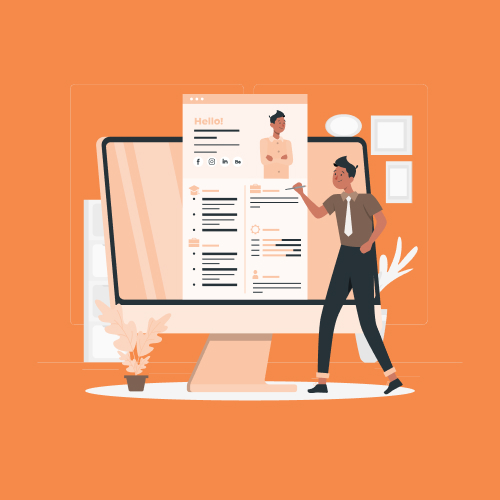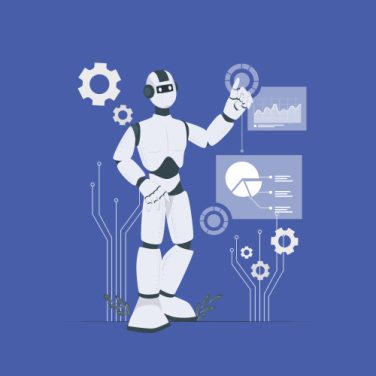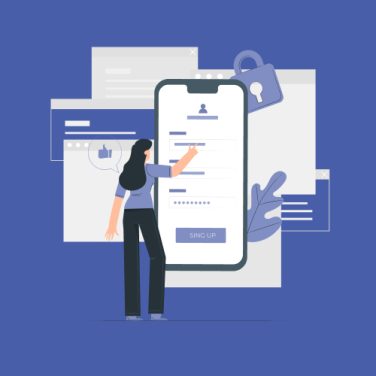The modern talent landscape presents significant challenges: growing skill shortages, surges in high-volume hiring, and evolving candidate experience expectations. AI recruitment solutions address these pressures by automating repetitive tasks, freeing recruiters to focus on strategic initiatives and relationship building.
- Market pressures: AI recruitment solutions help organisations navigate talent scarcity and high application volumes with speed and precision.
- Cost and time savings: Automated screening, scheduling, and candidate outreach reduce manual overhead and accelerate hiring cycles.
- Fairness and compliance: Data-driven processes and bias-mitigating algorithms promote objective decision-making and meet regulatory standards.
- End-to-end acceleration: From automated candidate sourcing to onboarding, AI recruitment solutions ensure seamless transitions across every phase.
Implementing automated candidate sourcing and automated hiring solutions transforms traditional workflows. Systems equipped with Natural Language Processing (NLP) and machine learning (ML) parse resumes, match candidate profiles, and engage inquiries 24/7. Teams see up to a 58% reduction in time-to-apply, stronger diversity outcomes, and measurable cost savings.
Ultimately, AI recruitment solutions matter because they unlock efficiency, enhance candidate experience, and foster data-driven insights. By moving beyond manual pipelines, organisations can scale recruiting efforts without sacrificing quality, compliance, or brand reputation.
TL;DR: Key takeaways
- AI recruitment solutions streamline sourcing, resume parsing, screening, and candidate engagement through automation.
- End-to-end automation boosts efficiency, candidate experience, and return on investment by reducing time-to-hire and manual effort.
- Core components include AI-powered sourcing engines, NLP-based resume parsing, automated scheduling tools, and real-time analytics dashboards.
- Best practices for implementation involve setting clear KPIs, integration planning with existing ATS/HRIS, and robust change management for recruiter adoption.
These insights equip recruitment and HR managers with a quick overview of how to leverage AI recruitment solutions and automated candidate sourcing and automated hiring solutions to optimise talent acquisition.
What are AI recruitment solutions?
AI recruitment solutions leverage machine learning, Natural Language Processing, and robotic process automation to optimise the full hiring lifecycle.
Unlike traditional applicant tracking systems (ATS), these intelligent platforms provide real-time insights, proactive recommendations, and continuous engagement.
Key components of AI recruitment
- AI Sourcing Engines: Automatically crawl job boards, social profiles, and internal talent databases.
- Resume Parsing: NLP-powered extraction of structured data from resumes in 50+ languages.
- Conversational AI: Chatbots handle FAQs, pre-screening, and interview scheduling around the clock.
- Predictive Analytics: Scoring models forecast candidate success and cultural fit.
- Automation Workflows: Orchestrate tasks such as offer generation, onboarding paperwork, and feedback collection.
These technologies combine to form a unified talent ecosystem. AI recruitment solutions proactively engage passive candidates, recommend top matches, and surface actionable metrics. They deliver end-to-end recruitment automation far beyond the capabilities of conventional ATS software.
How AI recruitment solutions work end-to-end
AI recruitment solutions orchestrate hiring in five distinct phases, each powered by automation:
- Phase 1: Automated Sourcing – AI crawls job boards, LinkedIn, and databases to identify active and passive talent, ranking candidates by relevance.
- Phase 2: Resume Screening – NLP parsers extract skills, experience, and education, then score applicants against job descriptions.
- Phase 3: Candidate Engagement – Chatbots respond instantly to FAQs, conduct pre-qualification, and offer self-service scheduling links.
- Phase 4: Interview Automation – Systems send invites, reminders, and collect interviewer feedback and candidate satisfaction surveys in real time.
- Phase 5: Analytics & Optimisation – Dashboards track funnel metrics, diversity ratios, and quality-of-hire, driving continuous improvement.
This end-to-end automation combines automated candidate sourcing and automated hiring solutions to streamline workflows, reduce errors, and enhance candidate experience. Organisations gain visibility and control, enabling data-driven refinements at every stage.
Which recruitment tasks can be automated?
| Giai đoạn | Automated Tasks |
|---|---|
| Top-of-Funnel | Candidate sourcing, job posting distribution, passive outreach |
| Mid-Funnel | Resume parsing, skill matching, assessment scheduling |
| Bottom-of-Funnel | Interview scheduling, offer generation, onboarding paperwork |
| Ongoing | Compliance monitoring, diversity reporting, candidate feedback surveys |
Automated candidate sourcing
Automated candidate sourcing uses AI to identify and rank candidates at scale:
- Comprehensive Crawling: AI engines scan job boards, social networks, and internal CRMs for profiles aligned with role criteria.
- Diversity Filtering: Apply demographic and skill-based filters to build inclusive talent pipelines.
- Seamless Integration: Connect with LinkedIn Recruiter, industry job boards, and internal databases via APIs.
- Performance Metrics: Track time to first response, source quality scores, and pipeline fill rates.
Link to automated candidate sourcing tools for detailed guidance. AI recruitment solutions ensure talent outreach is targeted, efficient, and aligned with diversity goals, reducing manual outreach by up to 70%.
AI resume screening and parsing
Resume screening and parsing powered by NLP deliver structured data and objective ranking:
- Multi-Language Support: NextGen parsers handle 50+ languages with high blind-test accuracy.
- Data Extraction: Extract education, skills, experience, certifications, and contact details into standardised fields.
- Scoring Algorithms: Rank candidates by skill match, experience level, and culture fit.
- ATS Integration: Connect via seamless API to existing applicant tracking systems.
Discover how AI resume parsing improves data quality and accelerates candidate review. Automated resume screening identifies top talent within seconds, reducing manual screening time by 80%.
Automated hiring solutions and candidate engagement
Conversational AI and scheduling automation streamline candidate interactions:
- AI Chatbots: Answer FAQs, conduct pre-screening, and guide applicants through application steps.
- Self-Service Scheduling: Candidates select interview slots via calendar links integrated with Outlook or Google Calendar.
- Instant Business Answers: MiA delivers compliance details, benefits information, and next-step guidance on-demand.
- Feedback Automation: Collect candidate satisfaction surveys and post-interview feedback for continuous improvement.
Such automated hiring solutions ensure 24/7 engagement, reduce no-show rates, and improve candidate satisfaction scores by over 25%.
Building an end-to-end AI recruitment lifecycle
Design a unified process from sourcing to onboarding using MiHCM’s suite:
- Seamless Recruitment Process: View CVs, conduct evaluations, and onboard new hires within one flow.
- Efficient Recruitment: Leverage real-time HR analytics to optimise time-to-hire and applicant-to-hire ratios.
- Talent Acquisition & Onboarding: Automate job postings, candidate pipelines, and offer management.
- Instant Business Answers: Use MiA for candidate insights, compliance checks, and scheduling via chat.
This orchestration creates continuous data flows between MiHCM solutions. Analytics feedback loops drive improvements in sourcing, screening, and engagement. The result is improved recruitment efficiency, a seamless candidate experience, data-driven hiring decisions, and significant cost savings.
Integration with ATS and HRIS systems
Seamless connectivity ensures AI recruitment solutions complement existing HR technology:
Best practices for seamless integration
- Compatibility: Use pre-built connectors for major ATS and HRIS platforms like Workday, SAP SuccessFactors, and Oracle.
- Data Synchronisation: Define real-time versus batch update strategies for candidate records and requisition statuses.
- Security: Implement encryption, role-based access control, and compliance with GDPR and SOC 2.
- Workflow Mapping: Trigger automation events from HRIS stages, such as offer acceptance or background check completion.
These integration strategies minimise IT overhead and ensure data integrity across automated hiring solutions.
Implementation best practices for AI recruitment solutions
- Define Clear Objectives and KPIs: Establish targets for time-to-hire, quality-of-hire, and cost-per-hire before deployment.
- Stakeholder Alignment: Engage HR, IT, legal, and leadership teams to ensure compliance and adoption.
- Phased Rollout: Pilot in one department or region, gather feedback, then scale progressively.
- Training and Change Management: Provide hands-on training, user guides, and regular performance reviews to build recruiter confidence in AI recruitment solutions.
Following these best practices ensures a smooth transition and maximises ROI from automated candidate sourcing and automated hiring solutions.
Measuring ROI and key metrics
Track and optimise performance with targeted metrics:
- Baseline vs. Post-Automation: Compare time-to-fill, cost-per-hire, and candidate Net Promoter Score (NPS) before and after AI deployment.
- Quality Indicators: Monitor retention rates, hiring manager satisfaction, and diversity ratios.
- Dashboard Best Practices: Use real-time alerts, drill-down capabilities, and executive summary reports for transparency.
- Continuous Optimisation: A/B test sourcing channels, resume screening criteria, and engagement scripts to refine processes.
Well-defined dashboards and analytics empower teams to demonstrate the value of AI recruitment solutions and drive ongoing improvements.
Future trends in AI recruitment and next steps
The next wave of AI recruitment solutions will integrate advanced capabilities:
- Voice and Video AI Interviewing: Automated candidate assessments using speech analytics and facial expression recognition.
- Augmented Reality Assessments: Immersive simulations to evaluate job-specific skills in real time.
- Predictive Retention Analytics: Forecast employee tenure and performance for proactive workforce planning.
- Ethical AI: Emphasis on transparency, bias mitigation, and candidate privacy safeguards.
- Action Plan: Start small with a pilot, iterate quickly based on metrics, and scale automation to achieve full end-to-end recruitment optimisation.



